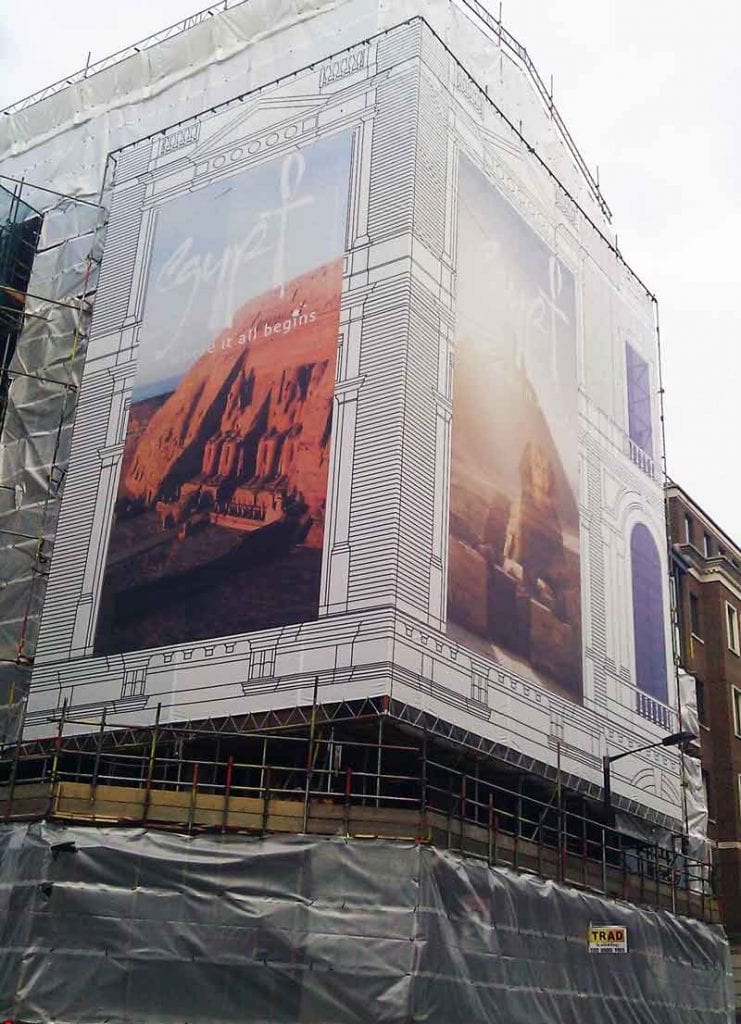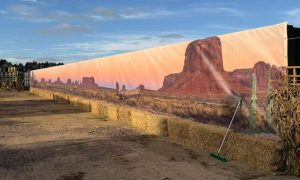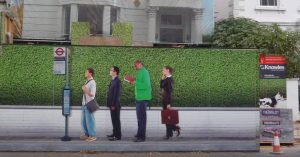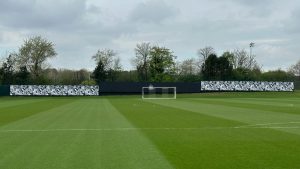The Planning issues normally associated with scaffold shrouds advertisement predominantly relate to interests of amenity.

The scaffold shrouds advertisement is usually short-term, on average of around 11 – 15 months and is associated with building construction or renovation, and works where buildings have to be scaffolded to facilitate façade cleaning or building works. They are generally limited to city centres or buildings of interest like stately homes, listed buildings or castles.
Wrapping the whole scaffolding structure with a large digitally printed image of the building façade can add dynamic colour and visual interest to urban city centre townscapes, when compared to the often shabby and uninviting traditional scaffolding sheeting called Monoflex or monarflex and netting.
Because there is there is no really incentive for developers to provide such features as there is an evident cost involved, developers propose an amount of commercial advertising space appropriate in design to make the scaffold shrouds commercial viable. Often the scaffold shrouds advertisement can cover the cost of the façade cleaning or renovation programme to proceed whereas otherwise it may not be affordable. So there is an amenity benefit during the duration of the scaffolding and also thereafter to the street scene from the cleaning or renovation of the building façade.
The 2007 Advertisement regulations, give recognition to scaffold advertisement and states:
“Buildings which are being renovated or are undergoing major structural work and which have scaffolding or netting round them may be potential temporary sites for scaffold shrouds advertisement or large wrap advertisement covering the face, or most of the face of the building. In all cases express consent will be required for the advertisement which can remain in place until the scaffolding or netting is removed. These advertisements should be considered on a site specific basis taking account of amenity and public safety issues.”
The regulation goes on and states:
‘Advises a decision maker to consider and positive advantages associated with such advert proposals. In applying the expression in the interests of amenity to any particular application or appeal, account should be taken not only of factor which may be detrimental to amenity but also of factors which may be to the advantage of the amenity of a locality, such as adding appropriate colour and interest to an otherwise drab area, or screening and eyesore. ‘

Where listed buildings or buildings of interest are involved any positive impact the building normally makes to the streetscape will be negated. As its façade will be concealed away behind the scaffolding structure or sheeting such that it will not be on public view whilst construction work is underway. The appearance and amenity of the site, as a consequence of the scaffolding and obvious construction works, will be much lower if it had scaffold shrouds advertisement. Such negative factors should be taken into account, and balanced against the generally short-term nature of a scaffold shrouds advertisement proposal. Which can both retain the visual interest of the façade whilst otherwise would have been hidden away. The scaffold shrouds advertisement will bring longer term amenity benefits to the streetscape of a restored building façade.
For more information on Scaffold shrouds please contact us or visit our blog.
PPS 17: Control of Outdoor Advertisements Annex A: Shroud Advertisement Display
What is the definition of an advertisement?
For planning purposes, ‘advertisement’ is defined in section 336(1) of the Town and Country Planning Act 1990 (as amended) as:
“any word, letter, model, sign, placard, board, notice, awning, blind, device or representation, whether illuminated or not, in the nature of, and employed wholly or partly for the purposes of, advertisement, announcement or direction, and (without prejudice to the previous provisions of this definition) includes any hoarding or similar structure used or designed, or adapted for use and anything else principally used, or designed or adapted principally for use, for the display of advertisements.”





